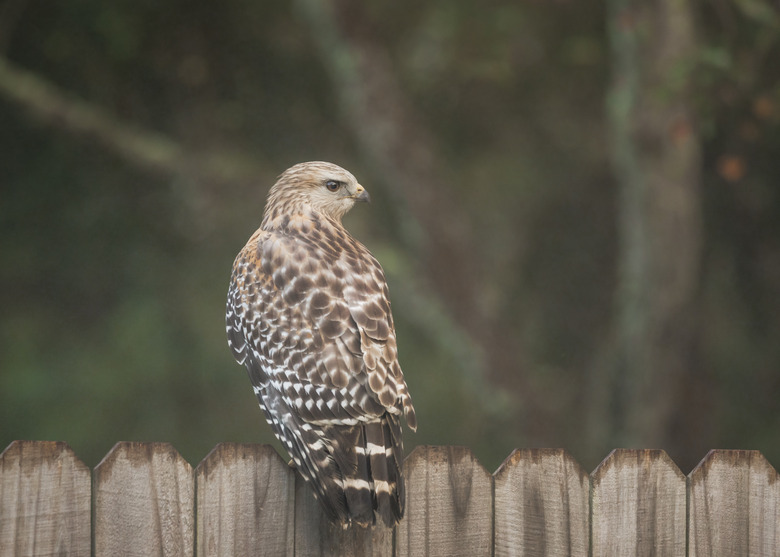How To Deter Hawks From My Backyard Birds
Hawks are skilled hunters who aren't particular about their diet. Any small animal can become prey, including the songbirds that visit your backyard bird feeder. Eating smaller birds may be second nature to the hawk, but it can be distressing for humans to watch. If you want to rid your yard of hawks so you can enjoy other wild birds safely, you'll have to focus your efforts on deterring the hawk.
Before you roll up your sleeves and go to war with a raptor, understand that deterring or excluding the bird are your only choices. Under the federal Migratory Bird Treaty Act, it's illegal to kill, injure, trap, or possess many different birds of prey, including hawks. In many areas, state laws further protect these animals. Some areas even make it illegal to harass the birds, so tread carefully to ensure legal compliance.
Ruin the View
Ruin the View
Hawks don't lunge blindly at their prey. They spot potential meals with their incredibly good eyesight and then swoop in for the kill. If there's no sight line, there's no attack. You can use this to your advantage.
If you have a bird feeder in your yard, hang a small cover over it to hide dining birds from hungry eyes. Even better, place a large umbrella over the feeder or situate the feeder under a canopy. Gazebos and low-hanging tree branches can also offer some cover. A yard filled with lots of plants and small shrubs also offers safe hiding places for smaller birds.
Create a Few Obstacles
Create a Few Obstacles
It's not enough for a hawk to just see its prey — it also needs a clear path to it. You can easily make sure it doesn't have one. Say, for example, that you keep chickens in your backyard. You can keep them safe if you put netting above their pen. You can, of course, cover the entire pen, but you don't have to go that far.
Instead, string some rope, twine or even fishing line across the top of the pen. Spacing each line a few inches apart will create a barrier too small for the hawk to dive through. This trick works equally well on top of outdoor kennels and dog runs.
This tactic also works at the bird feeder. Caged bird feeders are readily available and the mesh on the cage is wide enough to admit small birds but too narrow for hawks and larger animals to get through.
Discourage Perching Behaviors
Discourage Perching Behaviors
Hawks attack from above, searching for prey from on high and then swooping down to the ground. You can often stop an attack before it starts by eliminating good perches. Evergreens, for instance, are always covered in leaves or needles that can greatly obscure a hawk's vision. Choose them over deciduous plants when you can if hawks are a problem in your area.
Take care of your deciduous trees if you have them. Remove dead, leafless branches as soon as you notice them. If you spot good perching areas you can't eliminate, such as rooftops or fences, place roosting spikes on them so hawks don't have a comfortable place to land and scout from.
Try Scare Tactics
Try Scare Tactics
Scaring hawks is a little hit or miss, but it's certainly worth a try. One way to do so is to hang a fake owl on your property. Owls and hawks often compete with each other for food sources, and most hawks would rather not tangle with an owl. Scarecrows also sometimes deter hawks but work best when you move them from time to time.
You can also set up noisemakers that go off when they detect movement or install small jets that shoot water when approached. Unfortunately, hawks are fairly smart. They may eventually learn that although such deterrents are annoying, they cause no real harm. If and when they do, these hawk prevention methods often lose their effectiveness.
